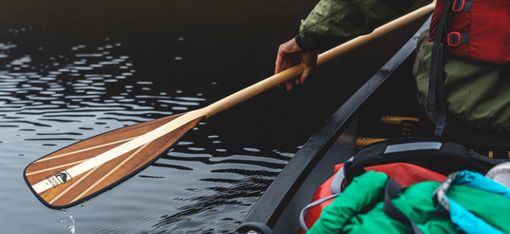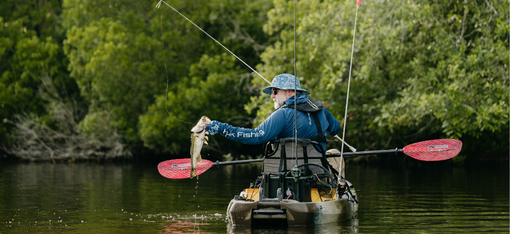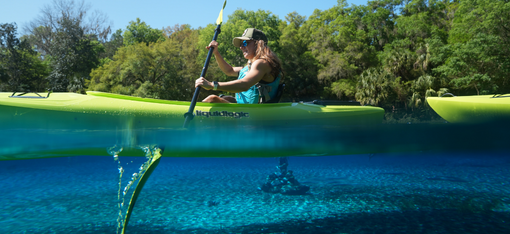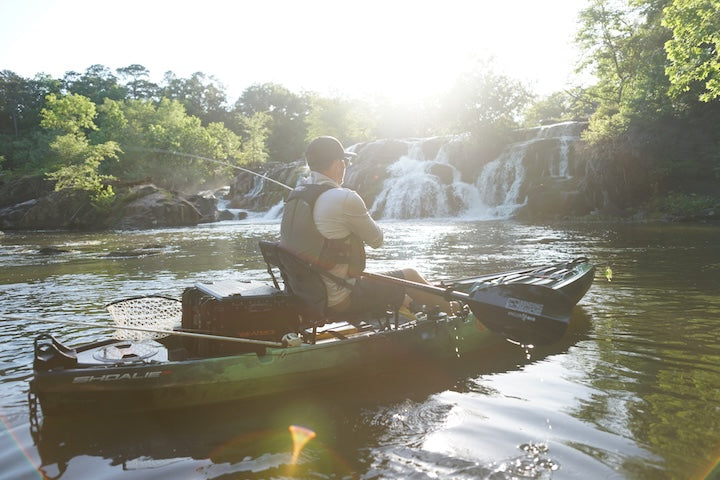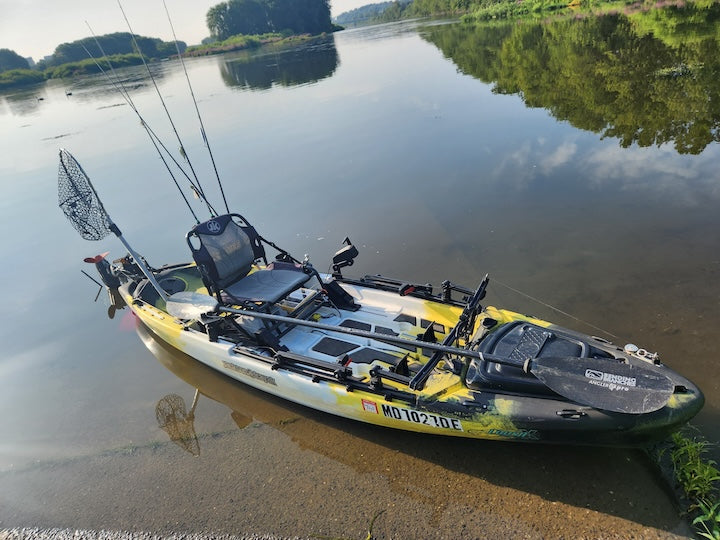Kayaking for Seniors: Why To and How To
10-minute read
Kayaking and kayak fishing are ideal activities for older adults. Bending Branches ProStaff team member Bill Schultz is himself a senior and an avid kayak angler. He offers his best tips and tricks below.

Bill Schultz enjoys helping other seniors get on the water
Bill has been fishing since the early 90s with a special affinity for smallmouth bass. He enjoys presenting seminars at sports shows and fishing clubs as well as contributing kayaking-related content to magazines, newspapers and websites.
As a senior, he still fishes regularly and has learned to adapt his kayaking and kayak fishing to keep him injury-free and go at a pace that works for him.
We thought we’d pick his brain for his best tips for older adults to either continue or begin these wonderful, healthy paddlesports:
BENDING BRANCHES: Why is kayak fishing an ideal paddlesport for older adults?
BILL: When doing my fishing talks at shows I note that I’m out to catch and release smallmouth bass, not to get a suntan, sightsee, drive my boat or paddle my kayak. But then I always laugh and say, “Actually even when not catching fish, paddling my kayak is fun and great exercise!”
As we age it’s important to stay active and a bonus if we can stay active outdoors.
Kayaking can burn 100 to 300 calories per hour. And when you add in factors like wind and waves it can be even more.

Bill out in his recreational kayak on Lake Michigan’s beautiful waters
Kayaking and kayak fishing are great ways to stay fit using our upper body, as well as core muscles of the stomach and lower back. I’m not an expert, but paddling a kayak for fishing or just fun uses your abs, biceps, triceps, lats, deltoids (shoulders), quadriceps (thighs), hamstrings, gluts (buttocks) and calves. The low impact and repetitive aspects of kayaking are a real positive.
BRANCHES: What gear do you recommend for seniors to get started?
[Bill gave us so many great details in his answer to this that we’re going to break it up into sections.]
BILL: The great thing about kayaking and kayak fishing is that it is extremely easy to get started with a minimal investment.
I suggest doing your homework online, visiting a local outfitter or attending an event like Canoecopia in Madison, Wisconsin to see what will be the best equipment for your needs.
I hear many say they’re going to just get a cheap big box store kayak, paddle and PFD (lifejacket). This will work, but I’d rather see you do that research and try to narrow it down to what’s best right away.
Another suggestion is to find an outfitter where you can rent a kayak to confirm you’ll enjoy kayaking. Most cities on lakes or rivers have outfitters. Rutabaga is one of Madison’s top stores. It has a pond behind the store to try different kayaks and paddles. And the staff are extremely knowledgeable.

Sit-in kayaks are faster, but harder to get in and out of
Deciding on a Fishing Kayak
If you plan to do a good deal of kayak fishing, I recommend getting a sit-on-top (SOT) model in the 10 to 13-foot range, weighing 60-80 pounds. The positive to an SOT for anyone—and especially seniors—is the ease of getting on and off. Rather than having to climb inside you just sit on the seat, swing your legs in and you’re ready to go.
I remember years ago at Canoecopia I spoke with several seniors who asked about SOT kayaks. I asked them where they planned to fish. They said they don’t fish, but the SOT is so much easier to get in and out of!
I’m fortunate to be able to use three types of kayaks by a top company, Jackson Kayak. For most of my recreational kayaking, I use a Tupelo 12.5 that weighs just over 55 pounds. It has an extremely comfortable seat and a good-sized cockpit opening that makes it quite easy to get in and out.
For my smaller lake and river fishing I use a 13-foot Jackson SOT that weighs about 75 pounds. And, when on the big waters of Door County I am in a Jackson Coosa FD with the amazing Flex Drive peddle system. I should note that even the recreational Tupelo comes with a track system that lets me put two or three RAM Mounts rod holders behind the seat so I can also use it for fishing.

Sit-on-top kayaks are very easy to enter and exit
However, if you’re using your kayak primarily for fishing you can’t beat the SOT. Along with the open cockpit that makes casting very easy, you likely have flush-mount rod holders behind the seat. I always add a couple of additional RAM Mounts rod holders giving me plenty of places to hold my St. Croix rods and a small net.
Most SOT models also have a nice open tankwell behind the seat where you can store your tackle, and some even come with additional rod holders. SOT kayaks typically have a very comfortable seat that’s several inches off the deck offering additional tackle storage under the seat.
I need to mention kayak width. Many of the kayaks on the market are wider than I prefer. Almost all kayaks are very stable, especially the SOT models. For this reason, I prefer SOT kayaks in the 30 to 34-inch range. My recreational Tupelo is 29 inches wide, which is perfect.
If you have shoulder limitations where paddling can be a challenge, consider one of the many self-propelled kayaks on the market. Most come with some sort of pedal system. The primary challenge to these is weight and makes kayaking alone somewhat challenging with loading and unloading.
Choosing Your Kayak Paddle
Many people spend more time picking the kayak than the paddle, but picking the right paddle is extremely important. Every extra ounce in paddle weight is like paddling an extra 100 pounds around each hour on the water.
For my kayak and kayak fishing, I love the Bending Branches Angler Pro Carbon that only weighs 27 ounces with the Versa-Lok ferrule which is adjustable up to 15 extra cm! This is great if you have kayaks of different widths or let someone else use your paddle. Also, changing weather conditions might require a longer or shorter paddle.

Bill with his favorite paddle, the ultra-light Angler Pro Carbon
Most kayakers are using paddles that are too heavy. I suggest buying the most expensive and lightest paddle you can afford. You will not be disappointed! And the paddles are very durable and last for years so spending a few extra dollars is a great investment.
Bending Branches also makes the Angler Pro at 30 ounces with the Versa-Lok Ferrule along with the Angler Ace at 30.5 ounces or 32 ounces depending on the ferrule system (Snap-button or Versa-Lok). All the paddles I mentioned have oversized blades, which I feel is a plus to help move you even better in various weather and wind conditions along with providing a better workout. Nicely, it’s the paddler who decides the effort, so you can push as hard as you want.
When I’m asked the question, I use 32 ounces as the top end of weight I’d recommend. I remember a few years ago running into one of the anglers from my smallmouth email group and his spouse in Northern Door County. I could see they were using paddles that were too heavy so I handed my Angler Pro Carbon to the guy’s spouse. She couldn’t believe the difference. I’ve done this quite a few times and people are amazed.
The key factor in picking the correct length paddle is a combination of your height and the width of your kayak. You’ll find sizing charts on the Bending Branches website.
Buying Your PFD [Life Jacket]
I mentioned the importance of a PFD/lifejacket. There are many outstanding ones on the market and that can fit kayakers of all sizes. I recommend one in a bright color for that extra visibility and one that has a thinner back panel so you’re not pushed too far out from the back of your kayak seat.
Just like spending a few more dollars on a lighter paddle, do the same to get a PFD that fits you comfortably. You won’t regret it. I’ve been using PFDs by Astral Designs for over a dozen years and have loved them.

A nice kayak trailer makes loading and unloading much easier than the car top
BRANCHES: What have you found to be the easiest way to get your kayak(s) on/off your vehicle and to/from the water?
BILL: Transporting your kayak can be a challenge at any age, which is why many kayakers and kayak anglers buy shorter and lighter kayaks.
With the many sophisticated roof rack systems available even seniors can load most lighter kayaks to a car top. This being said I prefer longer kayaks in the 12 to 13-foot range as they track better and are faster.
So I’ve been using a Malone MicroSport kayak trailer since 2011. It makes getting to and from the water so easy. It also allows me to use heavier fishing sit-on-top kayaks, which are more challenging to get on and off a vehicle, even with two people. With the normal bars, the trailer can easily handle two kayaks. And with the longer crossbars, three or four can fit depending on how wide they are.
Most kayak trailers are very light and can easily be pulled with smaller sedans and SUVs. I’ve pulled the MicroSport with a Honda Civic and Honda HRV without a problem.

A small kayak trailer is a great option for towing a single boat
Many SUVs have roof rails that can pair with many crossbar options on the market. There are also many types and styles of actual racks that hold the kayaks. As I suggested earlier, do your homework when deciding on the best rack for you.
I’ve been using the Malone racks for over a dozen years. My personal favorite for both recreational and heavier fishing kayaks are their SeaWing and MegaWing. I love the cradle design. Sliding a kayak on and off with the trailer at the water is so easy. These retail in the $150 range and last for years!
Whether you use a trailer or the top of our vehicle you probably will need some sort of cart when you cannot get right to the water. As with other items mentioned, there are many good ones on the market. I use one of the Malone transport carts like the Clipper TRX or Nomad TRX. Both retail for right around $100—a great investment!
BRANCHES: Are there any senior-specific precautions you’d like to mention?
BILL: Most seniors know their health pretty well and any issues they might have. If a senior is just getting into exercise and kayaking, it might be worth it to touch base with your healthcare provider. And you might want to do some simple exercises and stretches to prepare for kayaking, even though it doesn’t have to be overly taxing.
Most seniors will be kayaking with their spouse or friends, which is important from a safety standpoint. Not only for the fun of doing this with a friend but also for the loading and unloading of equipment.
Always have your phone in a ziplock bag of some sort. And if you’re kayaking or kayak fishing alone, let someone know where you will be and how long you plan to be out.
It’s extremely important to be aware of the weather! I do much of my kayak fishing and recreational kayaking in Door County, Wisconsin on Green Bay or Lake Michigan and the weather can change quickly. I make it a point to check the weather and wind. I also am not venturing more than a few hundred yards from shore, just in case I need to get to safety quickly.

Bill Schultz with a nice smallie
I’m a big fan of sun protection. So, as you can see in the picture of me above with a big smallmouth bass, I’m pretty much covered up head to toe. Most of us have had more than enough sun in our lifetime, so protective clothing and sunscreen are a must for me.
One area many don’t think about is our hands. The backs of our hands can really get hammered while fishing or just paddling. So for at least 15 years, I’ve worn Glacier Glove sun gloves with 50 SPF protecting my hands—with the bonus of some padding to protect your palms while you paddle. Several of the under-$30 gloves have leather or padding on the palms and are just great for kayaking.
* * * * *
If you’re an older adult who’s been thinking about getting into kayak fishing or recreational kayaking, we hope this has helped encourage you to do so.
And a big thanks to Bill Schultz for sharing his time, experience and photos with us!
Do you have paddle questions our friendly Customer Service Team can help you with today? Contact them: 715-755-3405 • [email protected]
More for you...




